Photo by Irvin Lin of Eat the Love
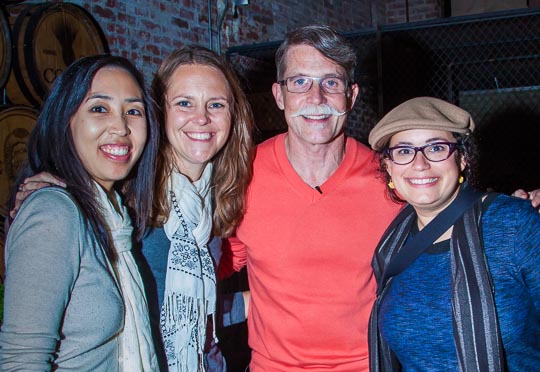
Tis the the season of Julie Andrews singing about her favorite things. If each of us composed our own version of the song, what would be the items you might use to replace “raindrops on roses and whiskers on kittens?” When the folks at Negra Modelo hired me to accompany Chef Rick Bayless on a crawl with other food bloggers and writers through San Francisco’s Mission district, I leapt at the chance to work with them. I wanted to encounter some of his favorite things, discovering his local San Francisco haunts and ask him questions throughout a Mission district walking food tour. It also served as a proper place to learn what makes Negra Modelo the perfect complement to Mexican food. Because we were introduced to so much during our crawl through the Mission, I’m going to separate it into sections that are not necessarily chronological, but tell the story better.
Photo by Vanessa Bahmani for Negra Modelo
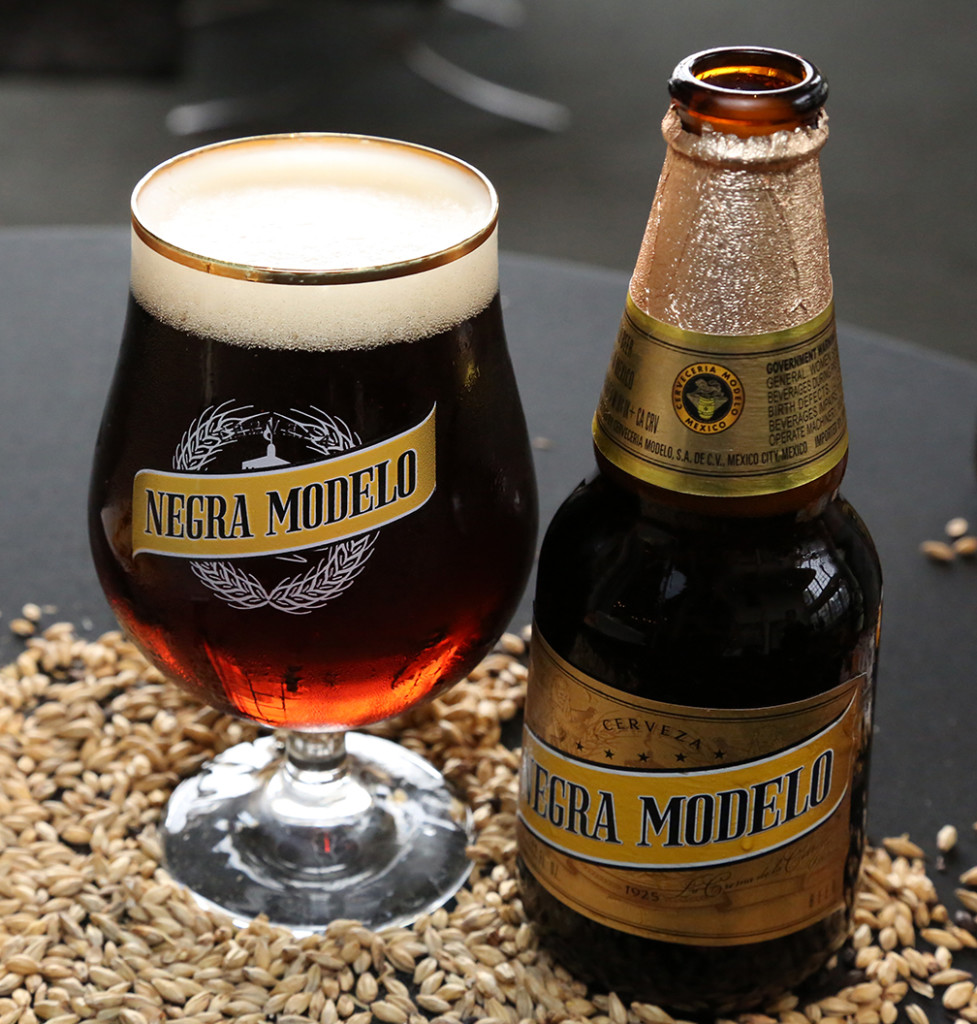
My History with Negra Modelo Beer
Before we begin our stroll through the Mission, though, let’s start by snapping off a cap from my favorite Mexican beer. Long before I met my husband, Nathan, the bonafide beer drinker in our household, I tolerated one or two beers, not yet possessing the language for flavors I loved (floral, malty, robust, effervescent) and those I’m not fond of (hoppy). On a trip to Mexico to visit family, I had tried my first Negra Modelo and it became my mainstay for what to sip when eating the foods of my ancestors and heart: Mexican food. Ever since Nathan has been introducing me to more beers, I have begun playing around with using it in cooking and even have a pinterest board dedicated to beer-infused foods. My appreciation for Negra Modelo met its match during the Mission crawl as I had a chance to talk with Katherine from the company. I learned that its smooth, caramel notes come from slow-roasting caramel malts, and that it is a Munich-style dunkel lager, that uses a technique to make the brewing process last twice as long as that of other beers. The company shared that they’ve been making the beer since 1925. And I shared that we just drank bottles of it at an Oakland local taqueria, Xolo. The timing couldn’t be more on point to pick up more ideas for pairing their beer with food.
Pairing Negra Modelo Beer with Food: Suggestions from Chef Rick Bayless
Later on in the evening when we finally ended up at a Mexican restaurant, we sipped chilled Negra Modelo and ate tacos and mini tortas. We listened as Chef Rick Bayless suggested ideas of types of Mexican food to pair with this medium-bodied dark beer. I nodded along as he described the malt in the beer as being so roasted that it gives “a soft impression of sweetness.” Yes, it does. Does it pair well with ceviche? No, but, according to Bayless, whip up a Veracruzano fish stew with guajillo chile, epazote, garlic and tomatoes, and the beer stands up to the hearty flavors. Black mole was an easy example for a perfect pairing, along with tacos of lamb barbacoa. Bayless also uses Negra Modelo in a chocolate ice cream they serve at his restaurant, Frontera, which made sense and made me completely want to try a scoop of the ice cream he described as making “the chocolate taste better than chocolate” deriving some maltiness from the dark beer. I already started eyeing that beer-braised lamb with leeks recipe that gets pulled out at this time of year and began wondering how it would taste with Negra? This might have to happen soon.
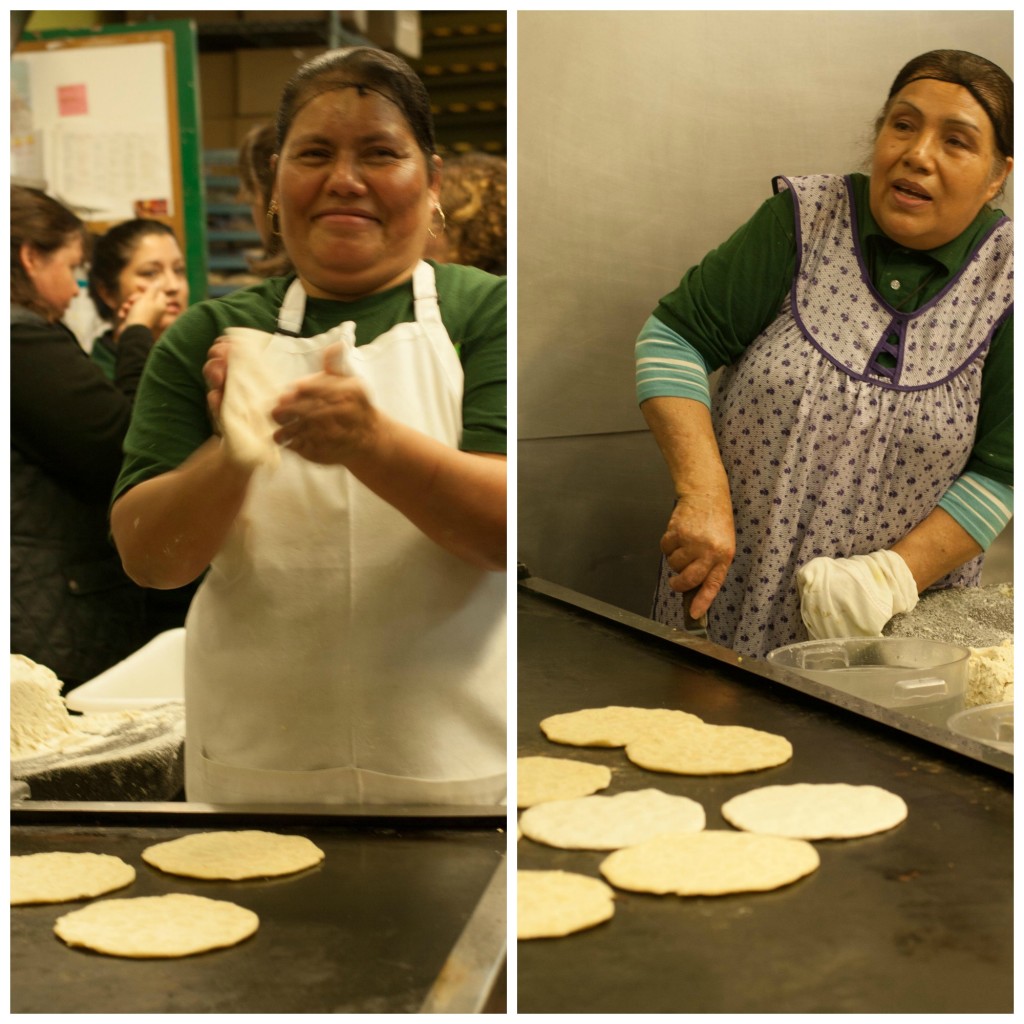
Finding Fresh Masa at a San Francisco Tortilleria
On a drizzly San Francisco afternoon, I wormed my way to our first stop on the Mission crawl and joined a team of inquisitive bloggers and Chef Bayless at a neighborhood Mercado and tortilleria, where we were invited into the kitchen. I set myself into a pocket of space and watched Maria and Noemi slap together corn tortillas from handmade organic masa that they grind in-house. In addition to griddling the tortillas, we sampled huaraches that Maria was making. Huaraches get their name because they are long and wide, like the shoe. I contributed a huarache recipe to “Sated Magazine” a while back and like them for the flexibility of being a blank canvas for interesting toppings. So, as Maria and I chatted, she patted a green huarache, flipping it and saying that this nopal flavor is her favorite. And, I’ve been dreaming of them ever since. Plates piled high with huaraches garnished with carne asada made the rounds as did plates huaraches stuffed with zucchini and cheese. Watching Noemi make tortillas by hand, you could see she is a pro from practice. She makes them everyday and laughed when I asked her if she eats them at home, responding, not really. I was grateful for time with these two ladies and really wanted to learn more about their kitchen stories.
Rick Bayless on His Favorite San Francisco Tortilleria
Rick Bayless described how in Mexico City, at the biggest open-air market you will see huge huaraches with all matter of toppings sprinkled on. He laughed as he recounted how the hawkers yell huarache topping options. Here’s the kicker: this Mercado in San Francisco’s Mission district is exactly where Rick Bayless would head for masa when he taught classes for the week at the Culinary Institute of America at Greystone. He explained the traditional process of making masa: the corn gets boiled with an alkaline lime solution and ground with salt plates. “You create flavors you can’t anyway else, the old traditional way.” He continued to talk about how most masa available in conventional stores is bland. Watching Maria and Noemi making tortillas and huaraches from fresh masa at the tortilleria in the Mission, Bayless described them doing “what needs to be done everywhere.” I had wondered why Bayless settled in Chicago when he could have ended up in other hubs of thriving Latin American communities. I quickly got my answer, “Chicago has the greatest number of tortillerias in the world, even outside of Mexico. You walk into a Mexican grocery store in Chicago and there are stacks of warm fresh tortillas available.” He continued, “This is the canvas upon which Mexican food needs to be painted – good tortillas.” And as if that was not definitive enough, “Without no good tortillas, there is no good cuisine.” Bayless went on to explain that access to fresh masa and the wealth of tortillerias in Chicago was one of the reasons he settled there.
Photo by Vanessa Bahmani for Negra Modelo
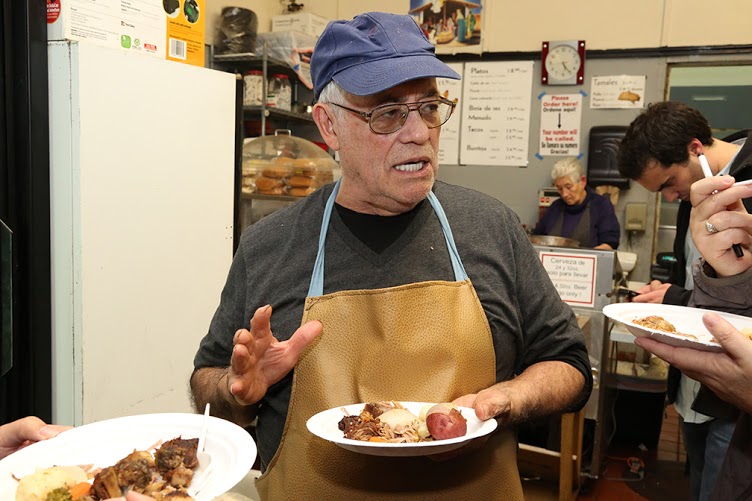
A Mexican Butcher in San Francisco Brings Flap Meat to North America
Sal welcomed us into his butcher shop. As we crowded together he began telling us the story of how he helped bring flap meat to the United States. In Mexico, they butcher the animal differently than in the United States. He described a time when he showed a person from IBP how to cut flap meat (at the time there was no name for it in English). Three weeks later, IBP started selling flap meat. Now it is available in the Unites States, Canada, and around the world, but up until that point, it had only been available in Mexico. Sal detailed how in Mexico they don’t waste meat and cut it differently to minimize waste. Maybe you’ve never heard of flap meat before, but maybe you’ve heard the term carne asada, made from flap meat. I marveled at hearing about Sal’s experience in butchery- his family has been in business for 54 years at the helm. When I shopped at the farmer’s market in Oakland this weekend and saw flap meat on the menu for a local rancher, I thought of Sal and how far his impact had reached beyond the Mission district of San Francisco.
Rick Bayless on Mexican Butchery
Later on in the evening, Rick Bayless corroborated Sal, the Mexican butcher’s experience citing one of his own. Chef Bayless described visiting a Mexican butcher shop in Chicago where a company poster for organ meats hung from a wall. In a regular butcher shop, there was an English-speaking poster on the wall from the same company, but only showing center cuts.
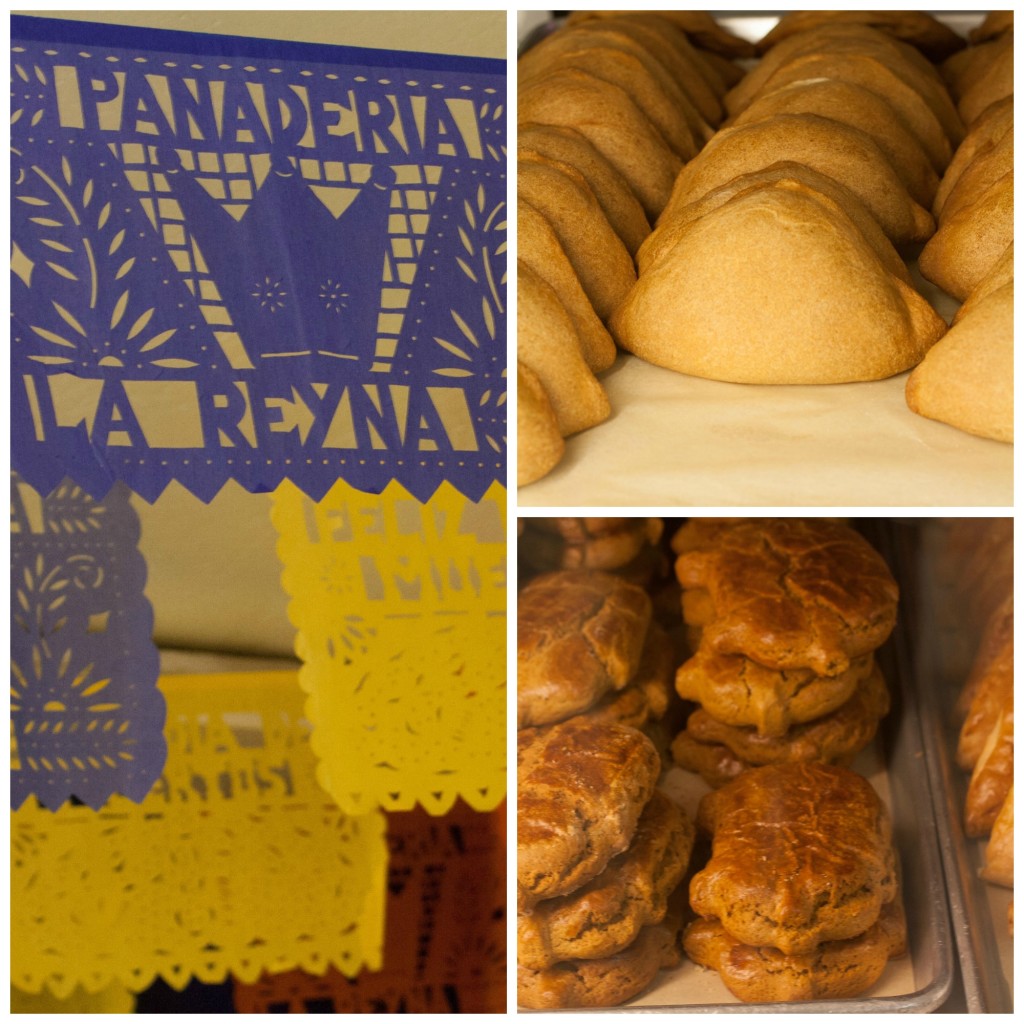
Looking for the Sweet Life at a Local Panaderia
It can be a bit overwhelming to walk into a panaderia with its walls of pastries. I always make a beeline to the walls looking for two particular baked goods. As a child, even my sweet tooth couldn’t convince me that conchas, the pastries with the shell pattern stamped into them, were any good. No, I always had eyes only for two things: the empanada de calabaza with its mild sweet dough stuffed with pumpkin, or chanchos, little gingerbread pigs. Sure enough, both of my sweeties were in the window beguiling all who walked by the panaderia and reminding me of my childhood. We learned at this panaderia that they make all of their baked goods in-house from egg, milk, sugar, and flour. I tried to imagine what their production system looked like as Sal, the son of the owner, described making 25 different kinds of bread. One of the bloggers asked him his favorite baked good and he smiled, talking about how good conchas are when they come right out of the oven, saying they reminded him of glazed doughnuts. I thrilled to hear they are going to begin making their own jellies soon, focusing on flavors of strawberries and pineapple. Listening to Sal talk, we broke corners off of several pastries with new appreciation.
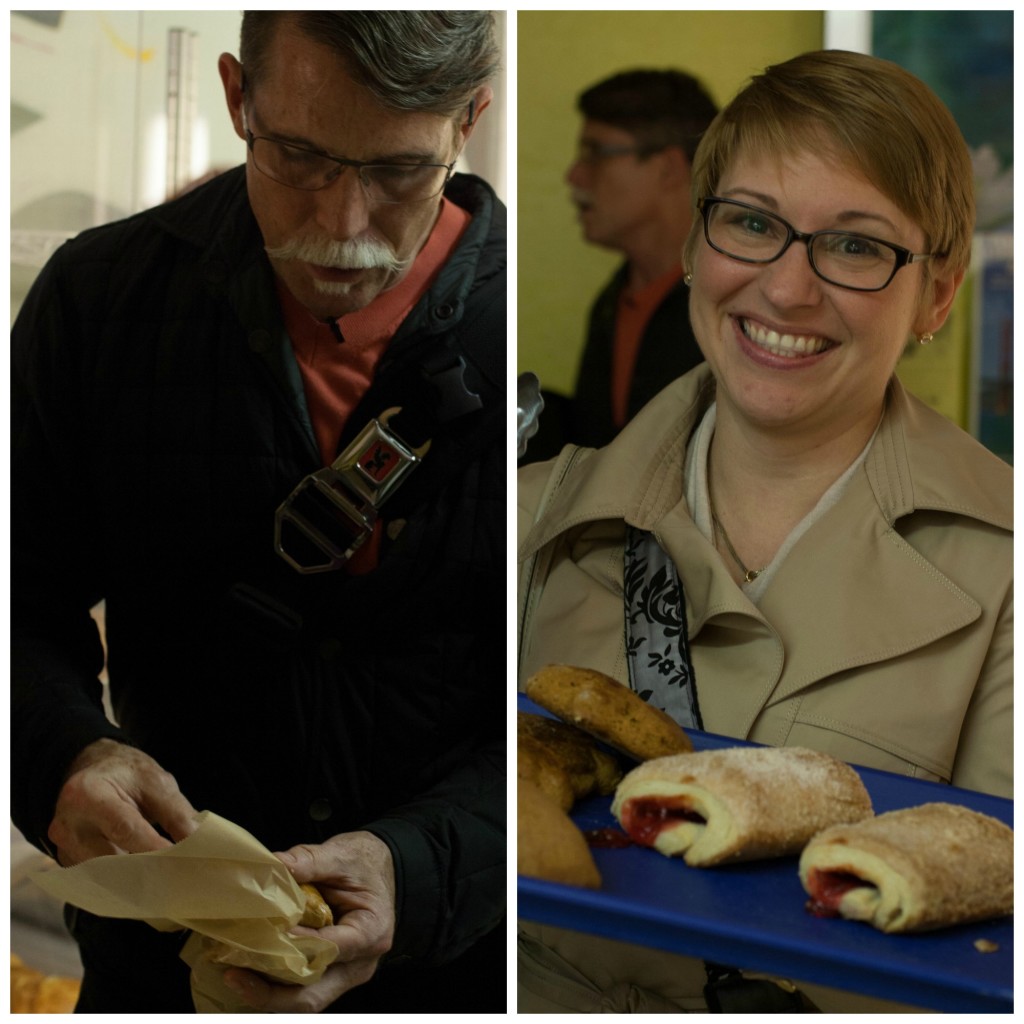
Rick Bayless on Panaderias & What’s New is Old
Rick Bayless mentioned how what Sal and his panaderia are doing reminded him a lot of young chefs who he has encountered in Mexico. His newest season of his TV show focuses each episode on a different chef and restaurant in Mexico, trying to help tell their stories. These chefs are getting deeply interested in learning from the artisan bakers in the small towns where long ferments and wood-burning ovens are not “hip ways” but old-fashioned. He said he is also seeing many Mexican bakeries go back to making their own jellies in-house like at this San Francisco panaderia. When asked what his favorite pan dulce is (everyone has one), he described the flaky campechanas he would eat when he lived in Mexico City. The dough from campechana is also used to make banderilla pan dulce but uses a different method.
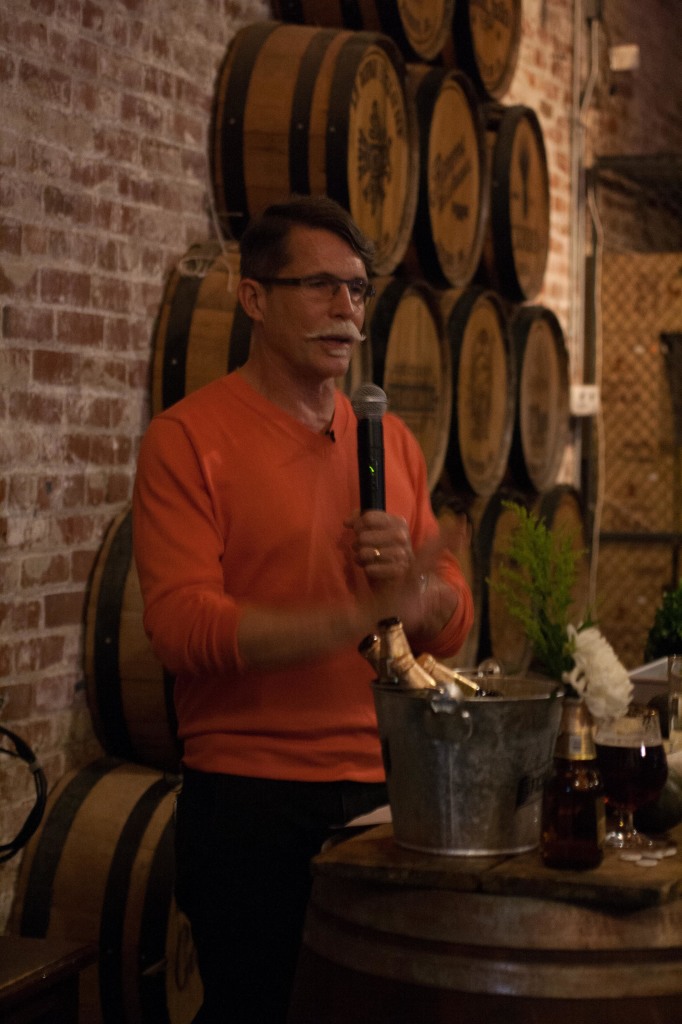
The Restaurant as Classroom
Everything wrapped up at a local Mexican restaurant where we gathered for supper and Chef Rick Bayless spoke on several important ingredients of Mexican cuisine. Can I just say that where Rick Bayless shines is as a teacher? It’s his natural mode that taps into his background of anthropological linguistics. When he talked about the different kinds of fresh and dried chiles and how they can be used, his voice was tinged with an eagerness to share his love for the culture and these key ingredients. Don’t get him started about whether a Pasilla pepper is also an ancho… I was fascinated to hear him talk about the different kinds of avocadoes that exist and the ideal ways to use them. On to talking about onions, he shared a tip that I’m planning to impart to my Cooking Matters students that can alleviate tears when chopping onions (Halve them and then rinse them in cold water).
Rick Bayless and Going Home to Consider Cultural Change
For a few minutes, Chef Bayless and I talked about how cuisines change as cultures do. He described how his circumstance when first in Mexico brought about his education. As a young student, he didn’t have a lot of money and would go visit the markets to get food to eat. “That’s where I ate. Those were my teachers.”As we chatted, I wanted to get a sense of what he saw happening to Mexican cuisine in homes in Mexico now. He had already talked about what he was beginning to see chefs doing in restaurants, but I’m increasingly inclined to believe that if you want to see where a nation is going with its foodways, go home. As suspected, convenience foods have begun to take root. “In Mexico, people have gotten away from traditional foods in homes. They’re eating a lot of foods like in the United States but with more spice.” But even so, Mexico is a culture steeped in tradition, and he reiterated that the whole family goes to mom’s house on Sunday. The mom used to have a full-time maid and she might not anymore. “Young chefs of Mexico have become standard-bearers. What used to be made at grandma’s house is filtering into restaurants.”
Photo by Vanessa Bahmani for Negra Modelo
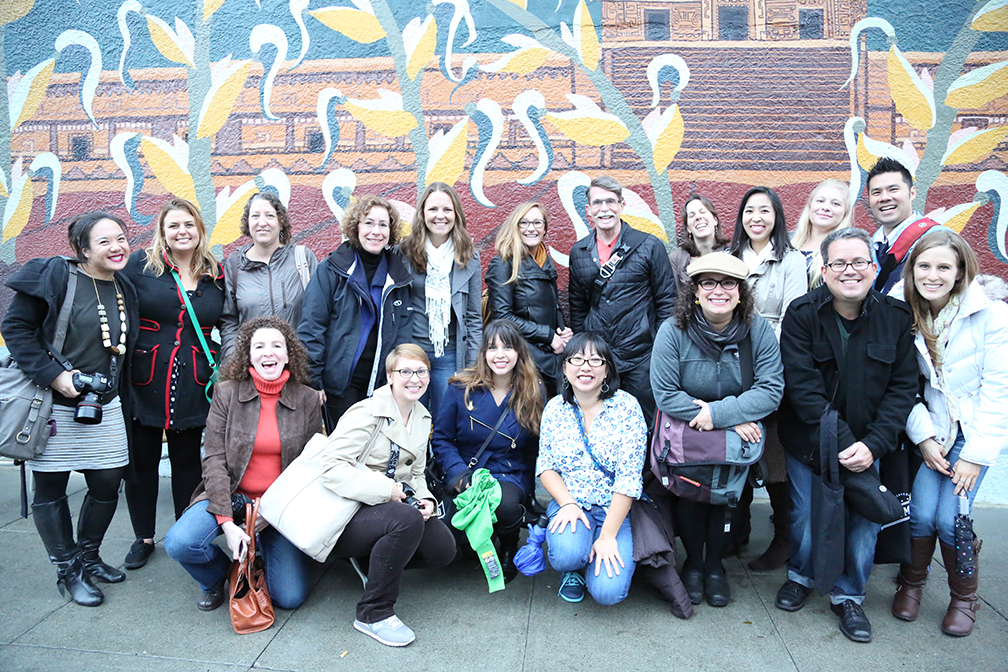
The perfect complement to this evening’s festivities included banding together food bloggers to help tell the stories of these food purveyors and to experience firsthand the rich cultural cuisine coming from Mexico and leaving an imprint in San Francisco and beyond. My thanks go out to Negra Modelo and their team for putting together such an educational and delicious experience, as well as to Chef Rick Bayless for letting a curious multi-culturual mutt like myself pepper him with questions along the crawl. I also had a blast getting to experience all of the offerings in such good company, seeing many friends, and meeting new local food bloggers. For other perspectives on the Perfect Complement Mission Crawl, check out the following local food blogs: Eat the Love, Brokeass Gourmet, Hedonia, Lick My Spoon, Dessert First, OMG! Yummy, This Week for Dinner, Bake Love Give, Sara Desaran, Ever in Transit, Amy’s Healthy Baking, Cooking with Amy, Very Culinary, Simply Real Moms, Cookies & Clogs, and Mom on Timeout.
DISCLOSURE: Negra Modelo paid for me to attend the event, share about it on social media and write this recap. My longstanding appreciation for their beer, respect for Rick Bayless and impressions of the Mission walking food tour are all mine. Check out Negra Modelo on facebook, twitter and follow #ThePerfectComplement for more beer and food pairing ideas.

Lovely observations on food and culture, and some personal anecdotes I didn’t get to hear. And what is Cooking Matters–is this a class you teach? I’d love to learn more. Great to meet you, Annelies!
Thanks Cassie. Cooking Matters is a class I teach to teenagers that’s part of No Kid Hungry. It’s a wonderful program and I love getting to teach people how to cook!
The onion tip and avocado tips are so perfect for your cooking classes. This is a wonderful post Annelies – a lyrical tour with so many details that I remembered as I read them but didn’t make it into my notes! I want to know more about your cooking classes at Cooking Matters when we get together for badminton – you need to fill me in!
Which panaderia did you go to?
Hi Valerie- We visited La Reyna Panaderia on 24th Street in the Mission district of San Francisco. I am looking forward to returning there.
Hi there,I check your new stuff named “Rick Bayless & A Mission District Walking Food Tour” daily.Your writing style is awesome, keep it up! And you can look our website about proxy list.
Thanks for being a fan of this post. Alas, it was a once in a lifetime opportunity, so while this post isn’t going to be updated, perhaps you’ll find others on the site you enjoy as much.